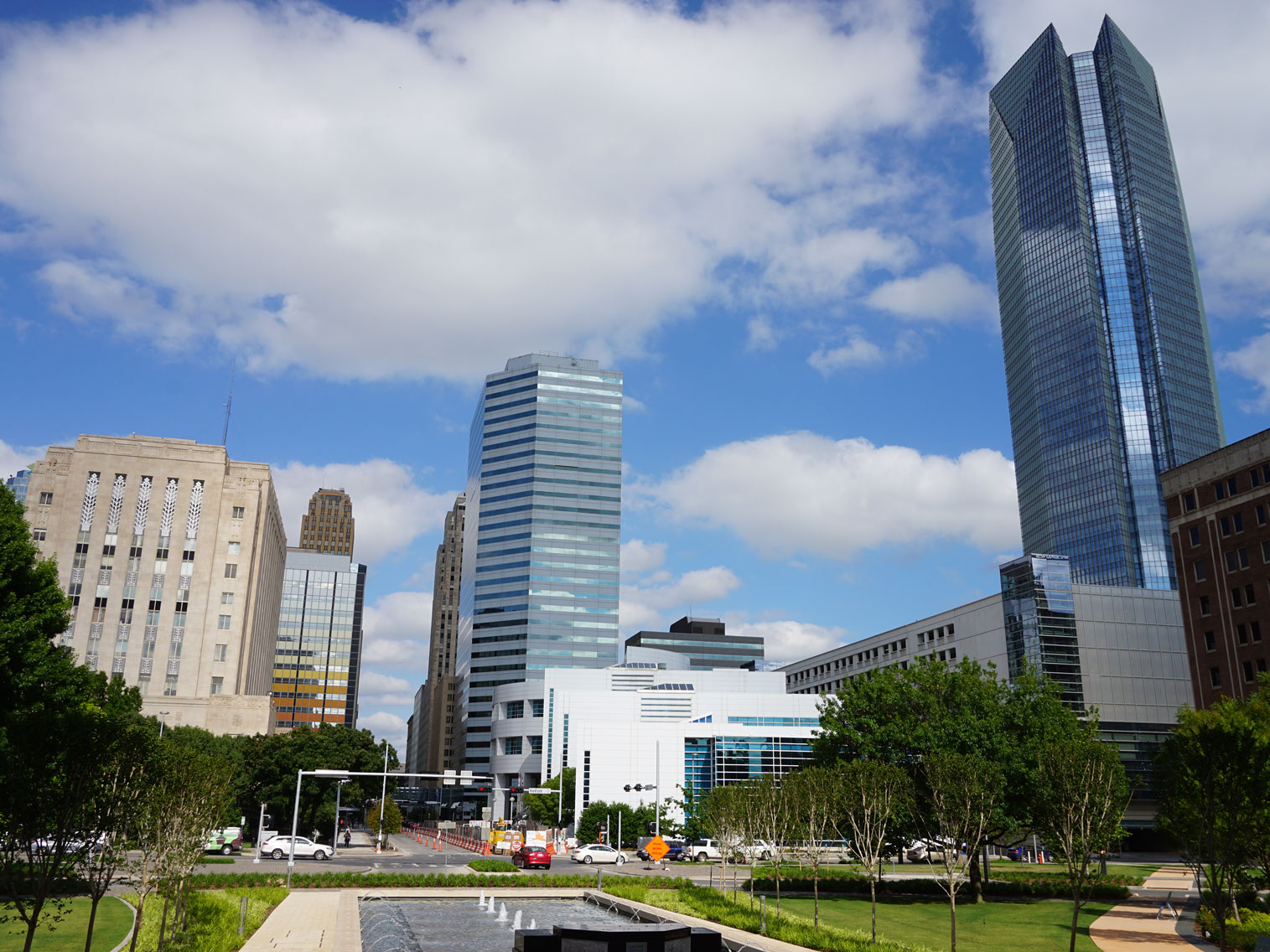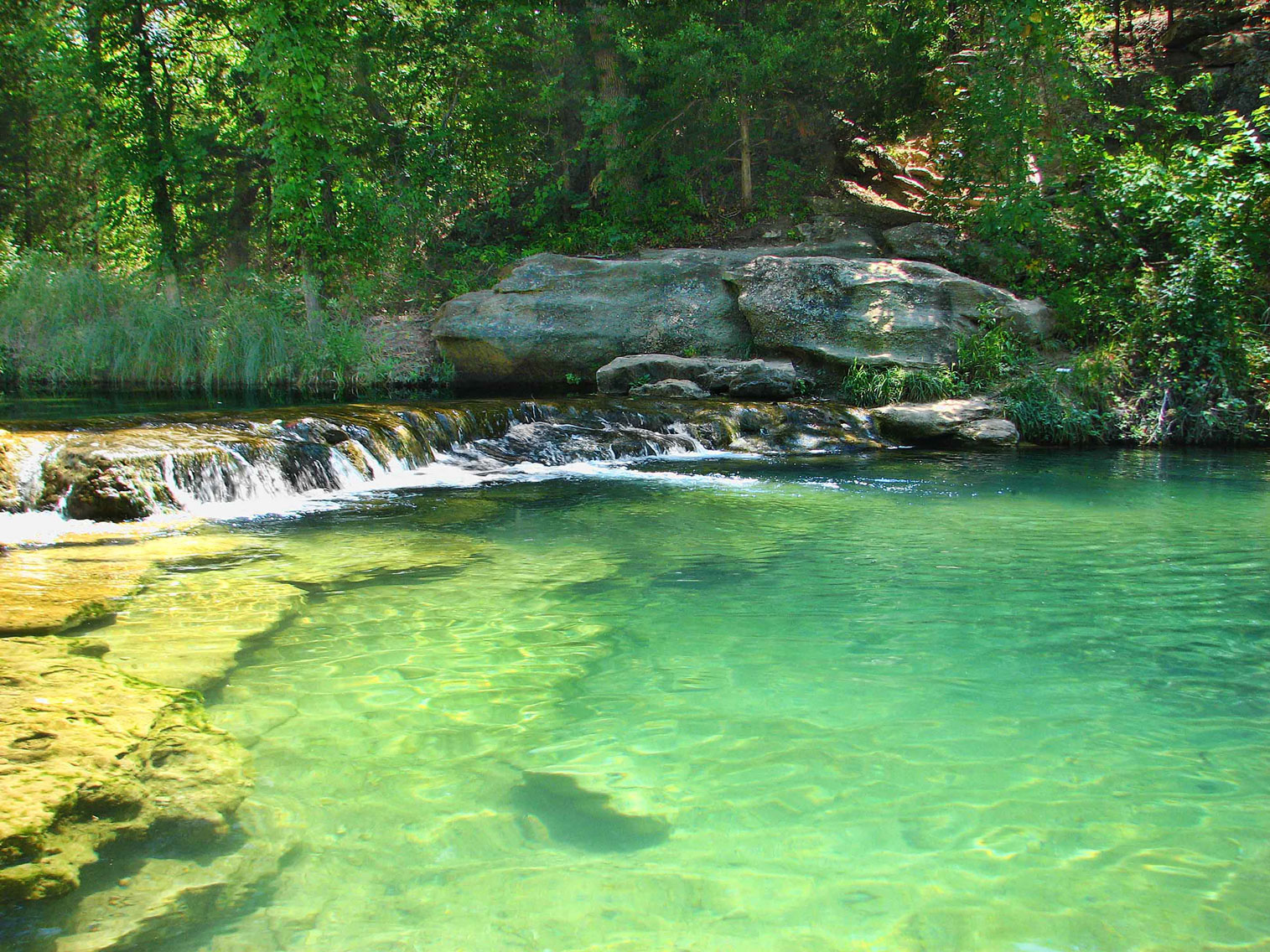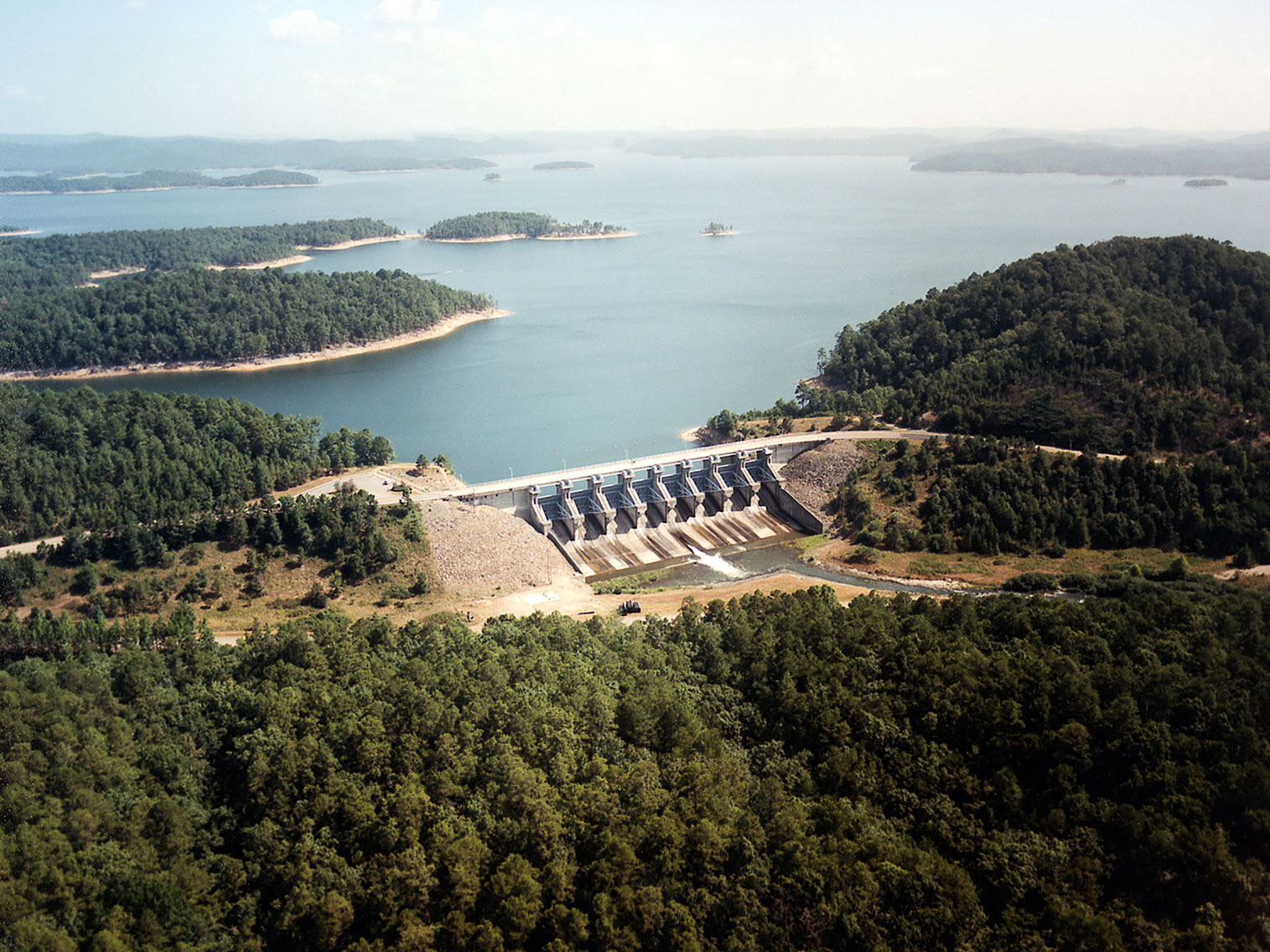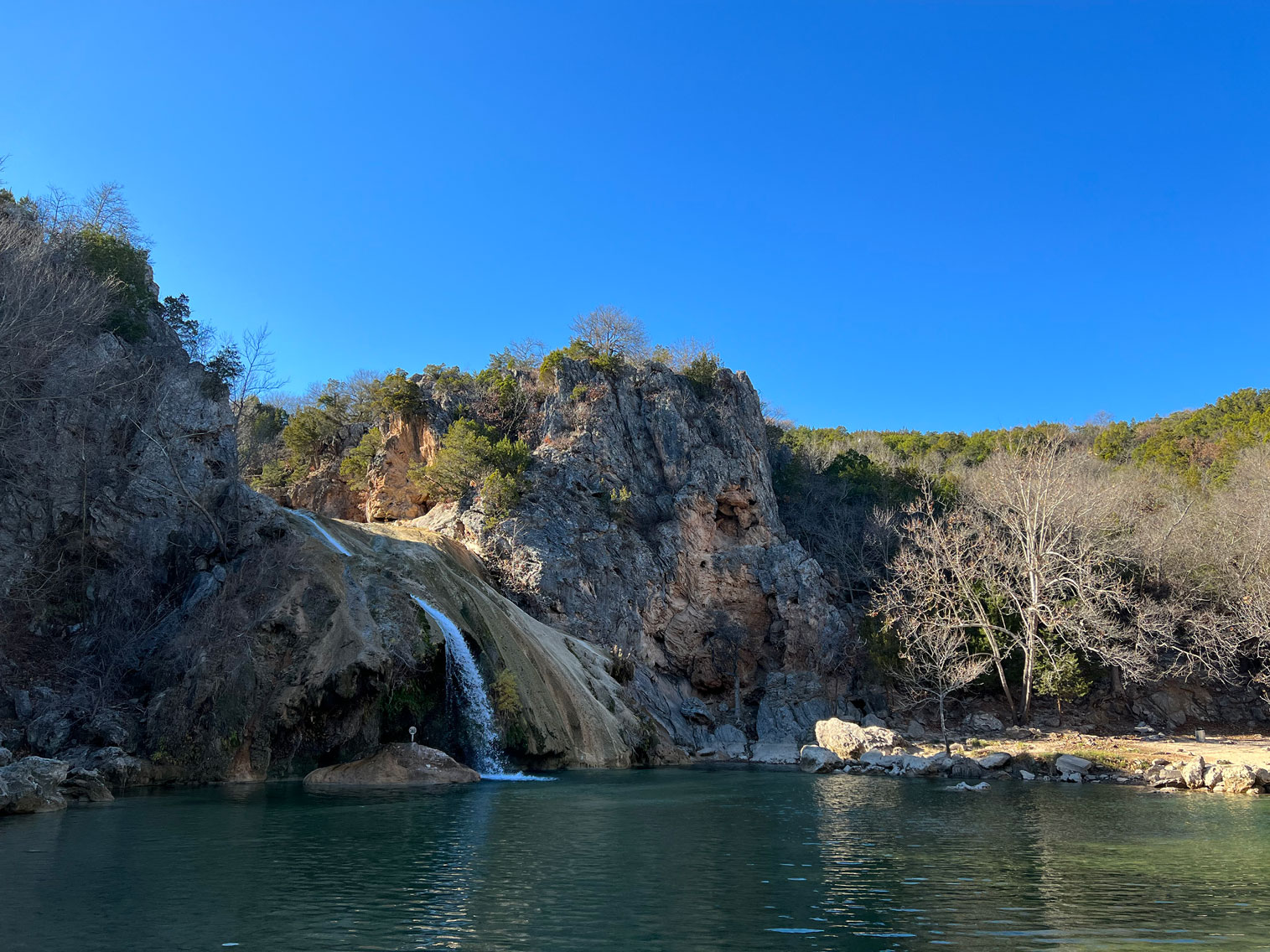State in the South Central and Southern Plains region of the United States, partially in the western extreme of the Upland South, with ancient mountain ranges, prairie, mesas, and eastern forests, most of Oklahoma lies in the Great Plains, Cross Timbers, and the U.S. Interior Highlands and historically served as a government-sanctioned territory for Native Americans removed from east of the Mississippi River and a route for cattle drives from Texas
Places to See in Oklahoma

Michael Barera, CC BY-SA 4.0, via Wikimedia Commons; Image Size Adjusted

Travertine Creek Swimming Area, Chickasaw NRA
jonathan c. wheeler, CC BY-SA 3.0, via Wikimedia Commons; Image Size Adjusted

Broken Bow Spillway, Beavers Bend Resort ParkU.S. Army Corps of Engineers, photographer not specified or unknown, Public domain, via Wikimedia Commons; Image Size Adjusted
Oklahoma State Parks
Beavers Bend · Natural Falls

Turner Falls ParkJacob.jose, CC BY-SA 4.0, via Wikimedia Commons; Image Size Adjusted
Landmarks and Landscapes
Black Mesa · Blue Whale of Catoosa · Heavener Runestone Park · Pops Restaurant · Turner Falls
Oklahoma is a state in the South Central and Southern Plains region of the United States, partially in the western extreme of the Upland South. Its capital and largest city is Oklahoma City.
The state's name is derived from the Choctaw words okla, "people" and humma, which translates as "red." Oklahoma is also known informally by its nickname, "The Sooner State", in reference to the colonizers who staked their claims on land before the official opening date of lands in the western Oklahoma Territory. Oklahoma Territory and Indian Territory were merged into the State of Oklahoma when it became the 46th state to enter the union on November 16, 1907.
With ancient mountain ranges, prairie, mesas, and eastern forests, most of Oklahoma lies in the Great Plains, Cross Timbers, and the U.S. Interior Highlands. Oklahoma is at a confluence of three major American cultural regions. Historically it served as a government-sanctioned territory for Native Americans removed from east of the Mississippi River, a route for cattle drives from Texas and related regions, and a destination for Southern migrant settlers.
A major producer of natural gas, oil, and agricultural products, Oklahoma relies on an economic base of aviation, energy, telecommunications, and biotechnology. Oklahoma City and Tulsa serve as Oklahoma's primary economic anchors, with nearly two-thirds of Oklahomans living within their metropolitan statistical areas.
Oklahoma is between the Great Plains and the Ozark Plateau in the Gulf of Mexico watershed, generally sloping from the high plains of its western boundary to the low wetlands of its southeastern boundary. Its highest and lowest points follow this trend, with its highest peak, Black Mesa, at 4,973 feet (1,516 m) above sea level, situated near its far northwest corner in the Oklahoma Panhandle. The state's lowest point is on the Little River near its far southeastern boundary near the town of Idabel, which dips to 289 feet (88 m) above sea level.
Oklahoma has four primary mountain ranges: the Ouachita Mountains, the Arbuckle Mountains, the Wichita Mountains, and the Ozark Mountains. Contained within the U.S. Interior Highlands region, the Ozark and Ouachita Mountains are the only major mountainous region between the Rocky Mountains and the Appalachians. A portion of the Flint Hills stretches into north-central Oklahoma.
The semi-arid high plains in the state's northwestern corner harbor few natural forests; the region has a rolling to flat landscape with intermittent canyons and mesa ranges like the Gloss Mountains. Partial plains interrupted by small, sky island mountain ranges like the Antelope Hills and the Wichita Mountains dot southwestern Oklahoma; transitional prairie and oak savannas cover the central portion of the state. The Ozark and Ouachita Mountains rise from west to east over the state's eastern third, gradually increasing in elevation in an eastward direction.
Oklahoma has fifty-one state parks, six national parks or protected regions, two national protected forests or grasslands, and a network of wildlife preserves and conservation areas. Six percent of the state's 10 million acres (40,000 km2) of forest is public land, including the western portions of the Ouachita National Forest, the largest and oldest national forest in the Southern United States.
With 39,000 acres (160 km2), the Tallgrass Prairie Preserve in north-central Oklahoma is the largest protected area of tallgrass prairie in the world and is part of an ecosystem that encompasses only ten percent of its former land area, once covering fourteen states. In addition, the Black Kettle National Grassland covers 31,300 acres (127 km2) of prairie in southwestern Oklahoma. The Wichita Mountains Wildlife Refuge is the oldest and largest of nine National Wildlife Refuges in the state and was founded in 1901, encompassing 59,020 acres (238.8 km2).
Of Oklahoma's federally protected parks or recreational sites, the Chickasaw National Recreation Area is the largest, with 9,898.63 acres (40.0583 km2). Other sites include the Santa Fe and Trail of Tears national historic trails, the Fort Smith and Washita Battlefield national historic sites, and the Oklahoma City National Memorial.
The Philbrook Museum of Tulsa is considered one of the top 50 fine art museums in the United States, and the Sam Noble Oklahoma Museum of Natural History in Norman, one of the largest university-based art and history museums in the country, documents the natural history of the region. The collections of Thomas Gilcrease are housed in the Gilcrease Museum of Tulsa, which also holds the world's largest, most comprehensive collection of art and artifacts of the American West.
The Egyptian art collection at the Mabee-Gerrer Museum of Art in Shawnee is considered to be the finest Egyptian collection between Chicago and Los Angeles. The Oklahoma City Museum of Art contains the most comprehensive collection of glass sculptures by artist Dale Chihuly in the world, and Oklahoma City's National Cowboy & Western Heritage Museum documents the heritage of the American Western frontier. With remnants of the Holocaust and artifacts relevant to Judaism, the Sherwin Miller Museum of Jewish Art of Tulsa preserves the largest collection of Jewish art in the Southwest United States.
The Oklahoma City Thunder of the National Basketball Association (NBA) is the state's only major league sports franchise.
Collegiate athletics are a popular draw in the state. The state has four schools that compete in NCAA Division I. The most prominent are the state's two members of the Big 12 Conference. The University of Oklahoma and Oklahoma State University average well over 50,000 fans attending their football games, and Oklahoma's football program ranked 12th in attendance among American colleges in 2010, with an average of 84,738 people attending its home games. Sports Illustrated magazine rates Oklahoma and Oklahoma State among the top colleges for athletics in the nation.
This article uses material from the Wikipedia article "Oklahoma" which is released under the Creative Commons Attribution-Share-Alike License 3.0